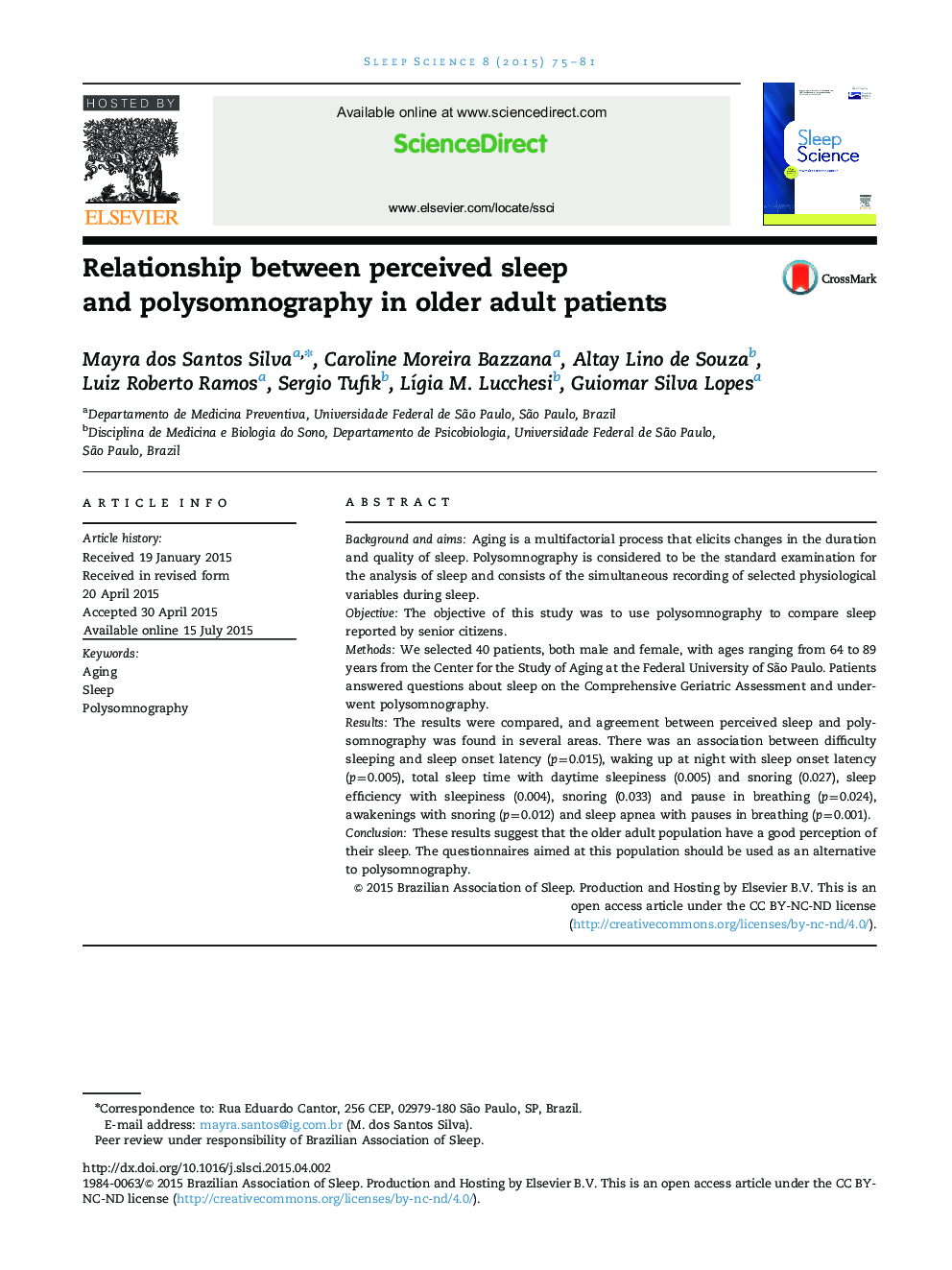| Article ID | Journal | Published Year | Pages | File Type |
|---|---|---|---|---|
| 3026598 | Sleep Science | 2015 | 7 Pages |
Background and aimsAging is a multifactorial process that elicits changes in the duration and quality of sleep. Polysomnography is considered to be the standard examination for the analysis of sleep and consists of the simultaneous recording of selected physiological variables during sleep.ObjectiveThe objective of this study was to use polysomnography to compare sleep reported by senior citizens.MethodsWe selected 40 patients, both male and female, with ages ranging from 64 to 89 years from the Center for the Study of Aging at the Federal University of São Paulo. Patients answered questions about sleep on the Comprehensive Geriatric Assessment and underwent polysomnography.ResultsThe results were compared, and agreement between perceived sleep and polysomnography was found in several areas. There was an association between difficulty sleeping and sleep onset latency (p=0.015), waking up at night with sleep onset latency (p=0.005), total sleep time with daytime sleepiness (0.005) and snoring (0.027), sleep efficiency with sleepiness (0.004), snoring (0.033) and pause in breathing (p=0.024), awakenings with snoring (p=0.012) and sleep apnea with pauses in breathing (p=0.001).ConclusionThese results suggest that the older adult population have a good perception of their sleep. The questionnaires aimed at this population should be used as an alternative to polysomnography.
